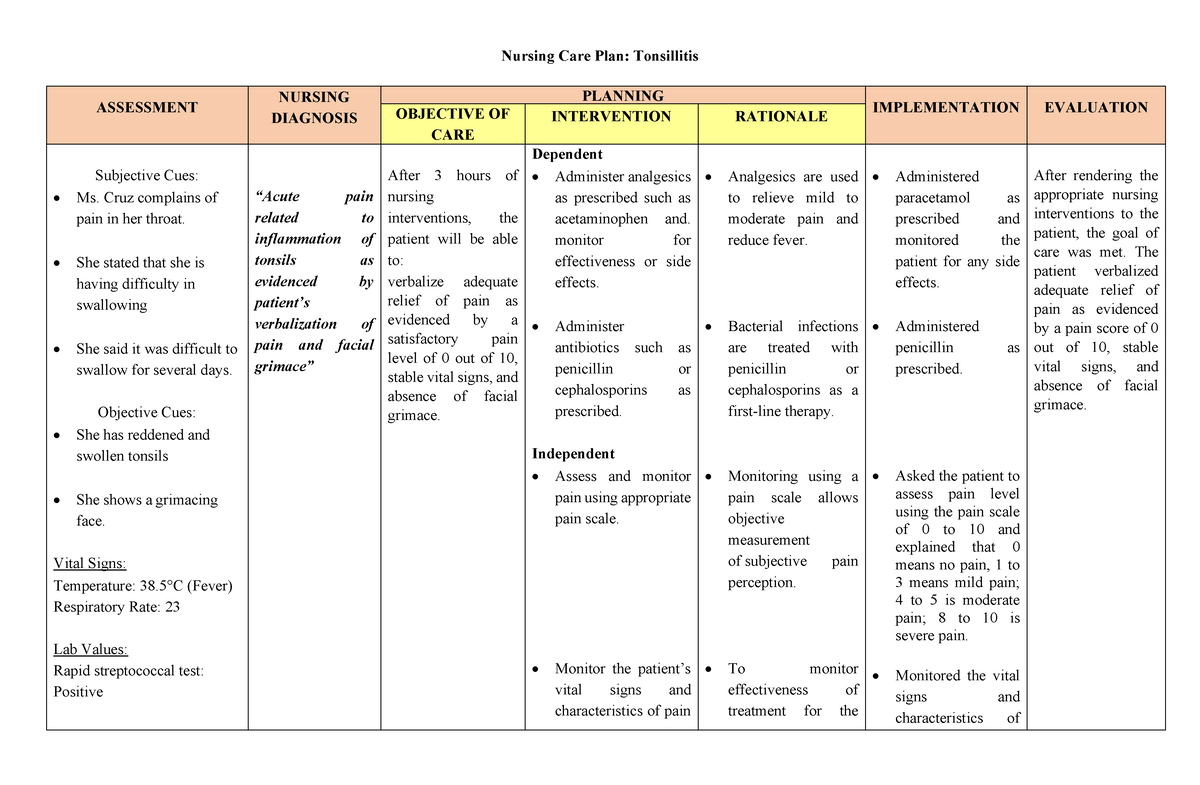Imagine this: a patient confined to a bed for an extended period, their skin slowly becoming red and irritated. This is the harsh reality of bedsores, also known as pressure ulcers, a common and often painful condition that affects many people, especially those who are bedridden. The impact goes beyond physical discomfort, stretching to mental distress and potentially even life-threatening complications. This article explores the complex world of bedsores, delving into the intricacies of nursing care plans designed to prevent and manage these ulcers.

Image: nandanursing.blogspot.com
Understanding Bedsores: What Are They and Why Do They Form?
Bedsores, or pressure ulcers, are wounds that occur on the skin due to prolonged pressure on a particular area. This pressure restricts blood flow to the tissue, leading to a breakdown of the skin and underlying layers.
While anyone can develop bedsores, certain factors increase the risk. These include immobility, malnutrition, poor circulation, and underlying health conditions such as diabetes. Individuals with limited mobility due to injuries, surgery, or chronic illnesses are particularly susceptible. The pressure exerted on the skin when lying or sitting for prolonged periods can cut off blood supply, leading to tissue damage and ultimately, an ulcer.
The Stages of Bedsores: Recognizing the Severity
Stage 1: Initial Skin Changes
This stage is characterized by non-blanchable redness, meaning the redness doesn’t disappear when you press on it. The affected skin may also be warm, firm, or painful to the touch.

Image: www.studocu.com
Stage 2: Partial-Thickness Skin Loss
A stage 2 bedsore is a shallow open sore with a red and pink wound bed. It can also appear as a blister filled with clear fluid.
Stage 3: Full-Thickness Skin Loss
Stage 3 involves full-thickness skin loss with damage to the underlying fat tissue. The wound may have a deep crater-like appearance.
Stage 4: Extensive Tissue Damage
Stage 4 is the most severe stage, characterized by extensive tissue damage with exposure of bone, tendons, or muscles. This stage often involves infection and may require surgical intervention.
Nursing Care Plan: A Multifaceted Approach
A well-structured nursing care plan is crucial for preventing and managing bedsores effectively. It involves a comprehensive assessment of the patient’s risk factors, followed by targeted interventions to minimize pressure, improve circulation, and promote healing.
Risk Assessment: Identifying Predisposing Factors
The first step is to assess the patient’s risk for developing bedsores. This involves gathering information on their medical history, current health status, mobility limitations, nutritional intake, and overall skin condition. Various validated risk scales, such as the Braden Scale and the Norton Scale, are commonly used to quantify a patient’s risk.
Prevention Strategies: Minimizing Pressure and Enhancing Blood Flow
Prevention is key to effectively manage bedsores.
Pressure Relief: Regular Position Changes and Support Surfaces
The primary goal is to reduce pressure on the skin. Frequent position changes are essential to distribute pressure evenly. Patients should be turned every 2 hours, or more often if necessary.
Supporting the Body: Special Mattresses and Cushions
Specialty mattresses and cushions can help to reduce pressure and improve blood flow to sensitive areas. These include alternating pressure mattresses, air-fluidized beds, and gel cushions.
Promoting Healing: Wound Care and Nutritional Support
Once a bedsore forms, a comprehensive wound care approach is crucial to promote healing.
Cleaning and Dressing: Maintaining a Clean Environment
Keep the ulcer clean with gentle saline irrigation and apply dressings as prescribed by the physician. The choice of dressing will depend on the size, depth, and severity of the wound.
Nutrition: Providing the Body with Essential Nutrients
Adequate nutrition is essential for wound healing. Ensure patients receive high-calorie, high-protein diets with plenty of vitamins and minerals.
Preventing and Managing Bedsores: Expert Tips
Preventing and managing bedsores requires a multidisciplinary approach involving nurses, doctors, nutritionists, and other healthcare professionals. Here are some expert-approved tips to help minimize the risk and effectively manage bedsores:
- Education: Empower patients and their families with knowledge about bedsores, their causes, and prevention strategies.
- Regular Assessment: Conduct regular skin assessments, especially in high-risk patients, to identify any early signs of skin breakdown.
- Skin Care: Maintain good hygiene by cleaning the skin daily with mild soap and water. Dry the skin thoroughly, especially in areas prone to moisture, such as skin folds.
- Fluid Intake: Encourage adequate fluid intake to prevent dehydration, which can compromise skin integrity.
- Skin Moisture: Use a moisturizer to prevent dryness, but avoid applying it to areas directly around a wound.
- Collaboration: Work closely with the patient’s family or caregivers to ensure proper skin care and pressure relief techniques are implemented consistently.
Frequently Asked Questions (FAQs) About Bedsores
Q: What is the most common cause of bedsores?
Pressure is the primary cause. Prolonged pressure on any part of the body restricts blood flow to the tissue, leading to cell death and eventual ulceration.
Q: Are bedsores painful?
Yes, bedsores can be very painful. The severity of pain can vary depending on the stage of the ulcer.
Q: Can bedsores be prevented?
Yes, bedsores are often preventable. Early detection, diligent skin care, and frequent pressure relief measures can greatly reduce the risk.
Q: How long does it take for a bedsore to heal?
Healing time can vary considerably depending on the stage, underlying health conditions, and the effectiveness of treatment.
Q: What are some complications associated with bedsores?
Bedsores can lead to several complications, including infections, deep tissue necrosis, bone infections (osteomyelitis), and sepsis.
Nursing Care Plan For Bed Sore
Conclusion: Protecting the Skin and Enhancing Quality of Life
Bedsores are a complex medical issue that can significantly impact a patient’s quality of life. Understanding the causes, recognizing the stages, and implementing comprehensive care plans are critical to preventing and managing these ulcers. By prioritizing pressure relief strategies, promoting good skin care, and ensuring adequate nutritional support, healthcare professionals can make a profound difference in the lives of individuals at risk for bedsores.
Are you interested in learning more about the latest advancements in bedsore prevention and treatment?





